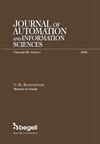基于高光谱遥感数据的自组织系统建模的熵方法
Q3 Engineering
Journal of Automation and Information Sciences
Pub Date : 2021-03-01
DOI:10.34229/1028-0979-2021-2-6
引用次数: 0
摘要
为了探索复杂的自组织系统,建立了各种数学模型。在地球系统中,过程的确定性是由于它们的随机特性。在这样的系统中,规则的确定性过程是由发生在微观水平上的许多随机元素相互作用形成的。在许多情况下,不可能正确地定义可观测系统或其部分的确定性进化规律,因为有大量不可预测和未知的因素影响它。然而,在微观层面上,系统元素的统计分布是可以观察到的,这使得预测其行为和评估影响系统的因素成为可能。对具有随机特性的系统建模的最普遍的方法是基于统计力学的基本概念——吉布斯-香农和雷尼信息熵。本文研究了空间分布地球系统自组织过程中状态及其散度定量估计的熵计算方法:α散度、Kullback散度、人意维谱变率。根据高光谱测量,观察到上述系统具有多重分形结构的特征。举例说明了熵模型在数值实验中的应用,并结合某天然气田的实际数据进行了数值实验。对基于均匀植被覆盖发射高光谱数据确定油气沉积边界的熵值方法进行了验证。本文章由计算机程序翻译,如有差异,请以英文原文为准。
ENTROPY METHODS OF SELF-ORGANIZING SYSTEMS MODELING USING HYPERSPECTRAL REMOTE SENSING DATA
Various mathematical models are created for exploring complex self-organizing systems. In geosystems, the deterministic nature of processes is due to their stochastic properties. In such systems, regular deterministic processes are formed by numerous random interelement interactions that occur at the micro level. In many cases, it is not possible to define correctly the deterministic law of evolution of the observable system or its part because of the large number of unpredictable and unknown factors that influence it. However, at the micro level, statistical distributions of system elements are available for observation, which allows to predict its behavior and evaluate the factors influencing the system. The most universal methods for modeling systems with stochastic properties are based on the fundamental concepts of statistical mechanics — the Gibbs-Shannon and Renyi information entropies. The article studies the entropy methods for calculating quantitative estimations of the states of spatially distributed geosystems and their divergences in the process of self-organization: alpha-divergence, Kullback divergence, variability of the spectrum of Renyi dimensions. The features of the above systems with multifractal structures according to hyperspectral measurements are observed. The examples illustrate the use of entropy models in numerical experiments with real data obtained from a natural gas field. Verification of the entropy methods for determining the boundaries of hydrocarbon deposits based on the hyperspectral data of emission of a homogeneous vegetation cover was carried out.
求助全文
通过发布文献求助,成功后即可免费获取论文全文。
去求助
来源期刊

Journal of Automation and Information Sciences
AUTOMATION & CONTROL SYSTEMS-
自引率
0.00%
发文量
0
审稿时长
6-12 weeks
期刊介绍:
This journal contains translations of papers from the Russian-language bimonthly "Mezhdunarodnyi nauchno-tekhnicheskiy zhurnal "Problemy upravleniya i informatiki". Subjects covered include information sciences such as pattern recognition, forecasting, identification and evaluation of complex systems, information security, fault diagnosis and reliability. In addition, the journal also deals with such automation subjects as adaptive, stochastic and optimal control, control and identification under uncertainty, robotics, and applications of user-friendly computers in management of economic, industrial, biological, and medical systems. The Journal of Automation and Information Sciences will appeal to professionals in control systems, communications, computers, engineering in biology and medicine, instrumentation and measurement, and those interested in the social implications of technology.
 求助内容:
求助内容: 应助结果提醒方式:
应助结果提醒方式:


